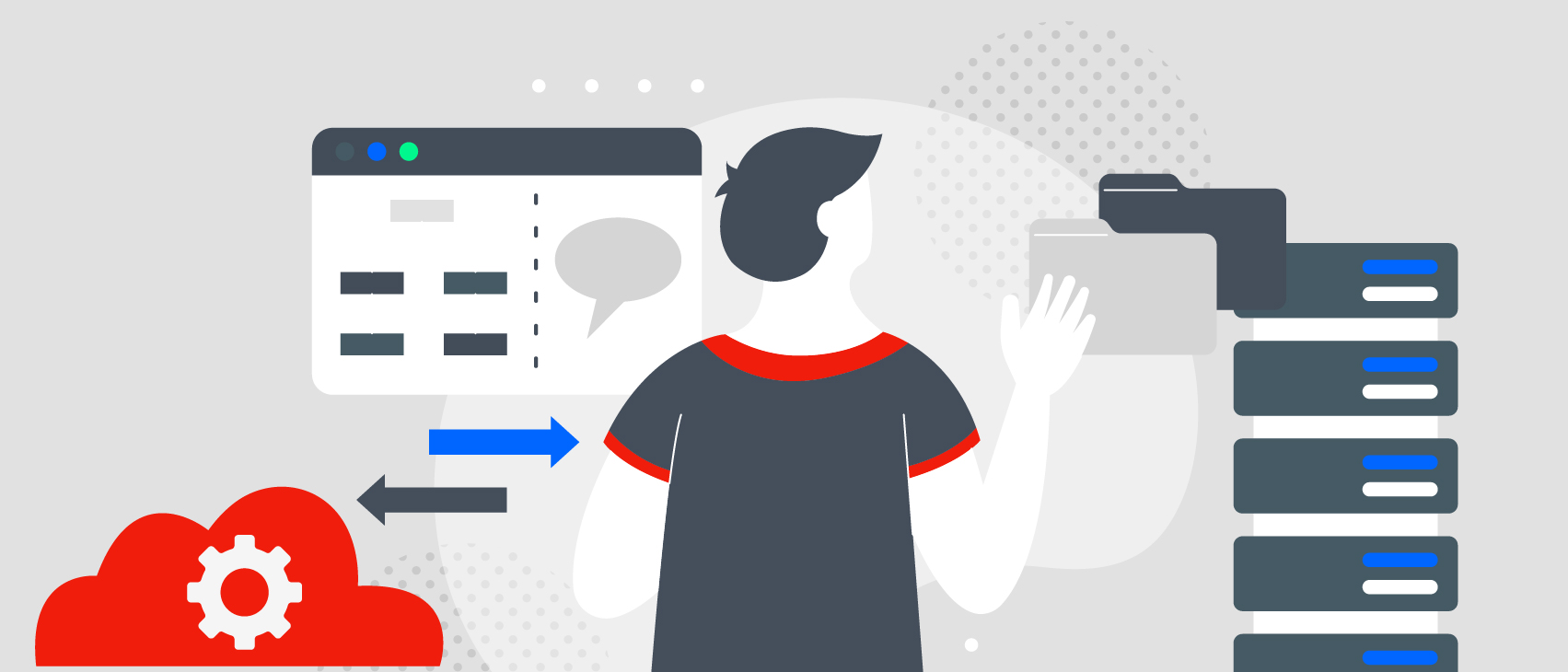04/04/2024

Many organizations are forced to keep legacy applications alive in order to maintain access to historical data for customer service, operations, or compliance purposes. However, this can be a drain on resources that could be better deployed in driving digital transformation. Reliance on legacy technology also introduces business risks, as older systems are more difficult to fix when things go wrong and are more vulnerable to security threats.
As organizations look to modernize their operations, one effective approach is to decommission legacy applications and move important historical data to a data repository of a better platform. Enterprise content management (ECM) systems are ideal for this purpose, as they are specifically designed to handle large volumes of data in various formats. By retiring applications as part of a standard process, organizations can free up resources, reduce risks, and facilitate digital transformation.
Whether you are already using an ECM system or considering to implement one, they are integral to the decommissioning process as they can ensure that data from retired applications is preserved in a central repository and easily accessible for future use. ECM systems provide a central hub for managing data and documents, enabling quick and easy access, storage, and retrieval.
Decommissioning should be viewed as a natural part of the application lifecycle, with a standard process in place to ensure that applications are retired at the appropriate time and in the appropriate way. Here are three main things to consider.

Decommissioning legacy applications can provide numerous advantages to organizations, including cost savings, risk reduction, and improved efficiency and compliance. By retiring older systems and moving data to a modern Enterprise Content Management (ECM) system, organizations can reduce their reliance on expensive vendor support for legacy applications (which is far more expensive than support for modern applications) and outdated software.
Older systems are often incompatible with modern security and authentication standards, and they can be difficult to troubleshoot when issues arise, making them more vulnerable to security breaches and other threats. Legacy application knowledge could also be in short supply, making the maintenance costs expensive. A modern ECM system eliminates needs for specialized skills to run multiple legacy applications, and provides a common platform for storing and accessing all organizational data from legacy systems, with way better security & privacy controls such as 2FA and personal data redaction.
The implementation of legacy systems can often lead to a less than satisfactory customer and user experience. Take, for instance, the case of organizational changes such as mergers and acquisitions - staff may be required to access multiple, similar systems in order to respond to a single customer request or make updates across multiple documents. However, by integrating an ECM repository with front-office systems, current and historical data from multiple sources can be easily accessed from a single location, improving response times and providing a streamlined customer and user experience.
Determining what legacy applications to decommission is difficult. There is no single answer to this and it all depends on many organizational factors and needs.
Deciding whether to decommission an application requires answering some key questions. Is the data static, or will it continue to change? Will it need to be accessed in the future for operational or compliance reasons? Are there risks, costs, or access problems associated with leaving the data where it is? If the answers to these questions indicate that decommissioning is the right choice, moving the data to an ECM system can help organizations streamline their operations and improve their data management practices.
Technically, data from any application can be moved to an ECM system. The format can be anything, from databases, Excel files, documents, PDFs, images, diagrams, photos, call recordings, videos and so on. Especially with a software like MARS from Helix International, which has 45+ connectors to read and extract data from any sources, and is capable of viewing any filetypes, there is no need to be concerned for legacy data migration and accessing them.

Once legacy data from retiring applications has been moved to an ECM system, it could be accessible through a variety of interfaces, including web browsers, mobile apps, and other business applications integrated with the ECM via APIs. And if you are using our proprietary and purpose-built software, MARS, you don't even need to worry about "dark data" or proprietary file formats from legacy applications. MARS can enable you to view any of them, extract any information, structure any unstructured data, and apply any business rules with automated workflows. This means that users will be able to access the data from any device and location, making it more convenient and flexible than the original legacy applications.
In addition to making the data more accessible, MARS can also provide enhanced functionality for viewing and interacting with the data. For example, data from multiple legacy applications can be combined into a single view, allowing users to access all the information they need in one place. This can save time and improve the user experience.
DataMining Studio, a component of MARS, also provide powerful tools for extracting, analyzing and mining the data, which can help organizations gain valuable insights into their operations and make more informed business decisions. By decommissioning legacy applications and moving the data to an ECM system with the help of MARS and Helix International's migration services, organizations can improve the accessibility, functionality, and value of their historical data.

Helix International is a leading provider of legacy modernization services, with a 30-year track record in the industry. The company offers a range of options to help organizations migrate their data to modern ECM systems, including full migration, ad-hoc migration, and assisted migration.
One of the key advantages of working with Helix International is its team of over 80 ECM developers and data engineers. This highly skilled global team has been instrumental in the company's impressive 100% project success rate with a roster of over 500 enterprise clients. The team's expertise and commitment to customer success have been key factors in the company's success and have established it as a leading provider of ECM migration services.
In addition to its migration services, Helix International also offers the Helix Real Time Viewer (RTV) through our proprietary software platform, MARS (Mass Archival Retreival System), which allows users to access data from legacy systems in real time without the need for migration. This can be a useful option for organizations that need to retain access to legacy data but do not want to incur the costs and complexity of a full migration.
To modernize your legacy systems and improve your data management practices, contact Helix International, the trusted IBM partner of choice in data migration services.
Massive savings in storage and compute costs. Our 500+ enterprise customers often cut their cloud bill in half or shut down entire data centers after implementing our solutions



